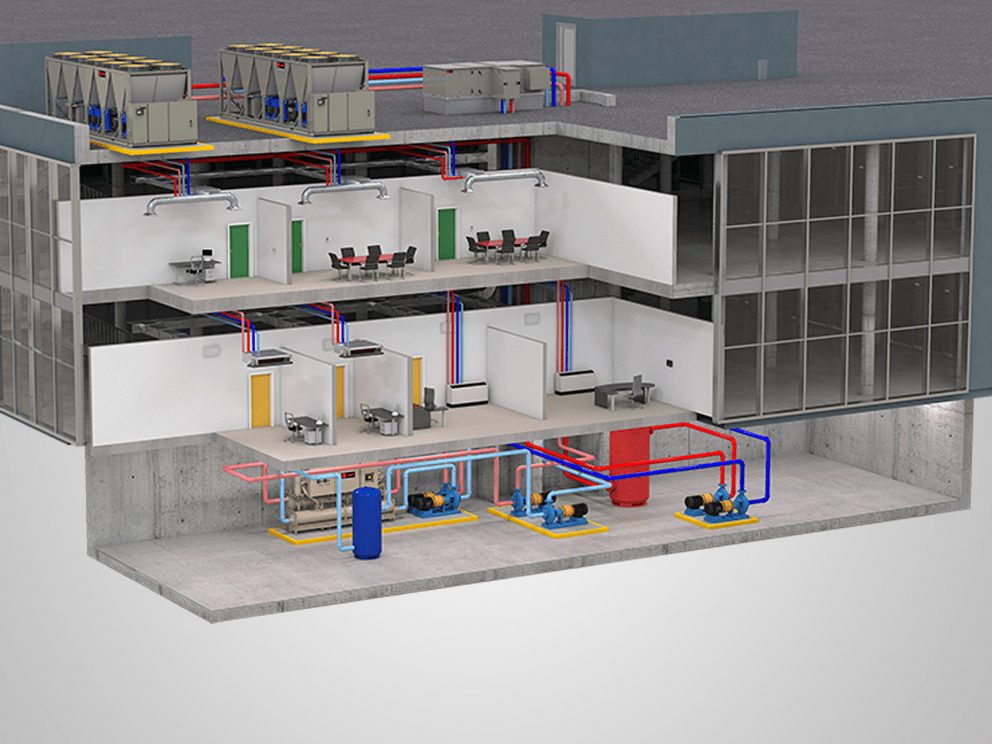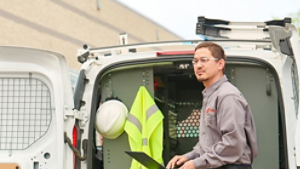
Is it October? We need to look at some monsters, but not the goblins and ghouls that come out at this time of year. We’re talking about energy monsters that take over facilities! Heating, ventilation, water heating, cooling and lighting are major energy consumers in healthcare systems, accounting for 29%, 12%, 11%, and 11% of the total amount of energy, respectively = 72% of total energy. So, what can you do about it?
HVAC
Some easy ways to save energy include:
- Even a new HVAC system, like a new car, will decline in performance without regular maintenance, so make sure that you have an annual maintenance contract. A contract automatically ensures that your system will get “pre-season” tune-ups before each cooling and heating season. Your chances of an emergency HVAC breakdown also decrease with regular maintenance.
- Install variable frequency drives (VFDs) and energy-efficient motors.
- Balance air and water systems.
- Upgrade and maintain heating and cooling equipment. Retrofit or install energy-efficient models to meet a building’s reduced cooling loads, and upgrade boilers and other central plant systems to energy-efficient standards.
- Another way to battle this monster is to review scheduling and set-points for ways to shift energy use to off-peak hours. Some utility companies base the entire upcoming year’s electricity rates on a narrow timeframe of peak demand use. It is time to find out when your building is using energy and then find out why.
Lighting
Some easy ways to save energy include:
- Replace old fluorescent and incandescent lighting with energy-efficient lighting systems that improve light quality and reduce heat gain.
- Install LED exit signs.
- Install occupancy sensors to automatically turn off lights on and off based on movement in the rooms. Consider beginning with storage rooms, meeting rooms, and other low-traffic areas. Occupancy sensors can save between 15 and 30 percent on lighting costs Checklists of Energy-Saving Measures | ENERGY STAR).
- Check with your local utility to see if they offer any incentives.
- Examine the opportunity to switch to LED lighting for outdoor signage and parking lights.
Appliances
While appliances aren’t the biggest energy monsters, they still present an opportunity to save. These account for the remaining 10-30% of energy use – in hospitals it’s usually closer to 30% due to the larger kitchen operations, as well as linens washing and the constant use of medical equipment (Energy Use in Hospitals (energystar.gov)). Some easy ways to save energy are:
- Unplug your laptop or turn off your computer when you leave the office
- Keep refrigerators on a lower demand setting
- We all know how important coffee is but try not to make a new pot every 30 minutes.
- Use a power strip for equipment to make it easy to turn on and off
According to the Department of Energy, 30% of energy use in commercial buildings is wasted (About the Commercial Buildings Integration Program | Department of Energy). It’s important to make sure that you’re doing what you can to reduce your energy consumption. If this feels overwhelming, we’re happy to help! Trane has experts in HVAC, energy supply and demand, lighting and controls. Call us today!

About the author
Angie Stokes, Controls & Digital Service Sales Leader, Southern Atlantic Region
As a regional sales leader for our Commercial HVAC Digital and Controls Business, Angie is responsible for leading sales teams across Virginia, West Virginia, North and South Carolina to deliver solutions to customers that enhance their business through digital services and products.
Angie and her teams contribute to the Trane mission to Reduce the Energy Intensity of the World by collecting, analyzing and translating building infrastructure data into meaning insights. Customers are able to take action on those insights in partnership with Trane to reduce their carbon footprint, reduce the cost of operations and improve their building environment.
Since joining the company in 2013, she has worked with customers to reduce their energy consumption, improve efficiency in their building operations, and redirect dollars from utility expenses to deferred maintenance needs.
Angie holds a master’s in Business Administration from Indiana University Southeast and a bachelor’s degree in Construction Management from Purdue University.

































































































